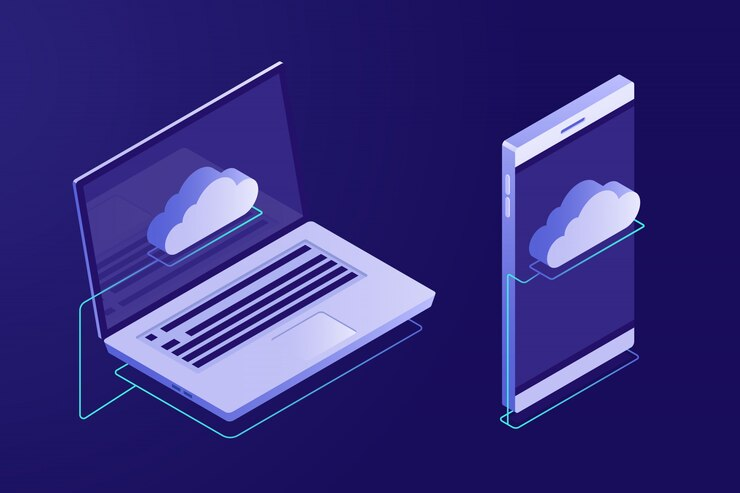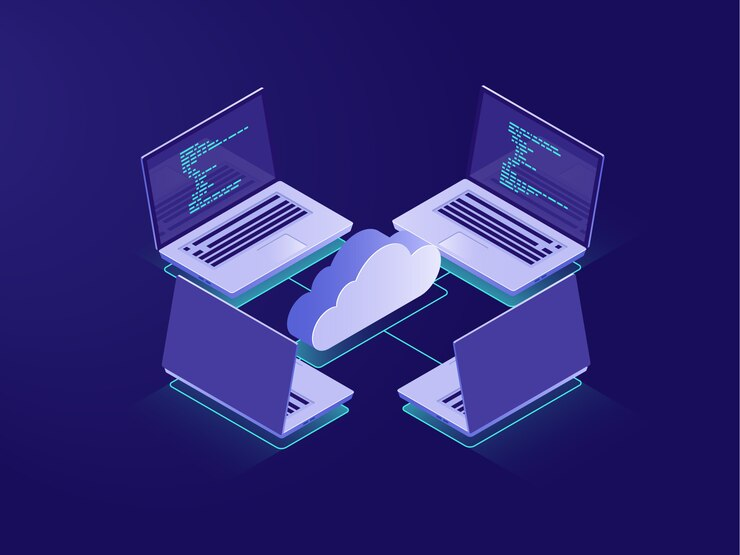- Published on
A Step-by-Step Guide to Cloud Application Development for 2024
- Authors
- Name
The problem of time-consuming network upgrades and associated outages affects a lot of enterprises. The company's IT requirements are difficult to foresee due to the increased need for mobility and flexibility. It also makes cost management very difficult. The good news is that all of these problems can be resolved with cloud development.
And companies are using it to their advantage. A Statista survey states that the majority of businesses already keep their sensitive data in the cloud. The most frequent consumers of the cloud are found in the insurance, telecom, retail, finance, and consumer goods sectors.
Understanding Cloud-Based Applications
The process of developing software applications or computer programs that operate online rather than locally on a server or your desktop is known as "cloud application development." Hence, a cloud-based application is a software product that, unlike web apps, saves data and executes its processing logic online. Cloud service providers' codica.com distant data servers make this feasible.
The cloud app's functioning may be represented by the following sequence. A user interacts with the program using a browser. The browser then utilizes an API to transmit data to a distant server for processing, gets the processed data back using the same API, and displays it to the user. In this case, the user's smartphone acts as an input device and doesn't obstruct the functionality of a cloud app.
The Benefits of Developing Cloud Applications
For organizations of all sizes, the cloud is becoming a more and more popular choice for data storage and application execution. Using a cloud application development platform has various advantages, such as more flexibility, lower costs, and rapid scalability.
- Enhanced adaptability and expandability. You may easily scale up or down an application that is cloud-based depending on your requirements without having to install or remove anything locally.
- Lower IT expenses. Because you don't have to pay for local hardware or upkeep, cloud-based applications may operate more affordably than conventional software.
- Enhanced safety. Your data is less likely to be stolen or damaged since it is kept remotely. Furthermore, you can be sure that your security is constantly current since cloud-based programs are updated automatically.
- Access from anywhere at any time. You may use your cloud-based application from any location in the globe as long as you have an internet connection. They are thus perfect for companies where staff travel often or work remotely.
Types of Cloud Services
The three categories of cloud services are Infrastructure as a Service (IaaS), Platform as a Service (PaaS), and Software as a Service (SaaS). The primary categories of cloud services are these. Each kind has special features and advantages suited to certain requirements for app development.
SaaS gives users the ease of accessing apps via the internet without requiring setup or installation on their devices. PaaS provides developers with a complete cloud application platform as a service for creating cloud applications, complete with hardware and software. IaaS companies use public or private clouds to manage an organization's infrastructure. They take care of standard requirements including storage, virtualization, servers, and networks. It is essential to comprehend these various cloud service kinds to choose the best strategy for your app development project.
Cloud Application Development: Step-by-Step Guide
Here is a step-by-step guide to cloud application development:
1. Identify goals and requirements
Clearly define what functionality and features the application needs. Determine target users and platforms, performance requirements, regulatory compliance needs, and expected traffic. This informs technical decisions down the line.
2. Choose a cloud provider
Research leading providers like AWS, Azure, and Google Cloud to host the application. Compare pricing models, server options, storage, scalability, and managed services. Choose a provider that best fits the application needs and skill sets of your development team.
3. Set up the cloud environment
Provision cloud resources like virtual servers, storage, databases, firewalls, DNS, etc. Configure access controls, VPN connectivity, and cloud monitoring/management tools. Ensure the environment meets security best practices.
4. Select frameworks and services
The cloud provider will offer services like load balancing, notification queues, file storage, machine learning APIs, etc. Evaluate these alongside open-source frameworks for the app architecture, data layer, UI (user interface), etc. The goal is to maximize ready-made cloud services to reduce overall coding time.
5. Application coding
Set up a Git-based version control workflow for the codebase. Adhere to platform-specific programming languages, frameworks, and tools outlined in the environment. Modularize application components so they can scale independently. Implement robust error handling.
6. Testing
As new app features are developed, conduct unit testing, integration testing, load/stress testing, and user acceptance testing. Perform testing early and often, both in staging pre-production and infrastructure testing environments.
7. Deployment and monitoring
With testing completed, deploy the production-ready application code and supporting cloud resources into the live environment. Monitor application health metrics, logs, traffic patterns, resource utilization, etc. to optimize performance. Plan updates and releases.
Beyond functionality, plan for spend from the outset. On AWS, bake cost controls into your architecture: enforce tagging for cost allocation, rightsize compute and databases, enable autoscaling and scheduled shutdowns for dev/test, and evaluate Savings Plans vs. RIs as usage stabilizes. For a tactical checklist of cloud cost optimization best practices, including Spot adoption, storage lifecycle policies, and continuous monitoring, consult this comprehensive guide to reducing AWS bills.
Following these steps will help translate application requirements into high-quality cloud-native apps that leverage cloud elasticity and platform services to reduce operational overheads. Maintain strong governance throughout the process.
Conclusion
Cloud app development offers developers and companies a plethora of chances to produce creative, scalable, and affordable solutions. You may use cloud computing to transform your software development projects by adhering to a step-by-step roadmap. Now is the moment to fully embrace the cloud and realize the possibilities of your app development projects.


